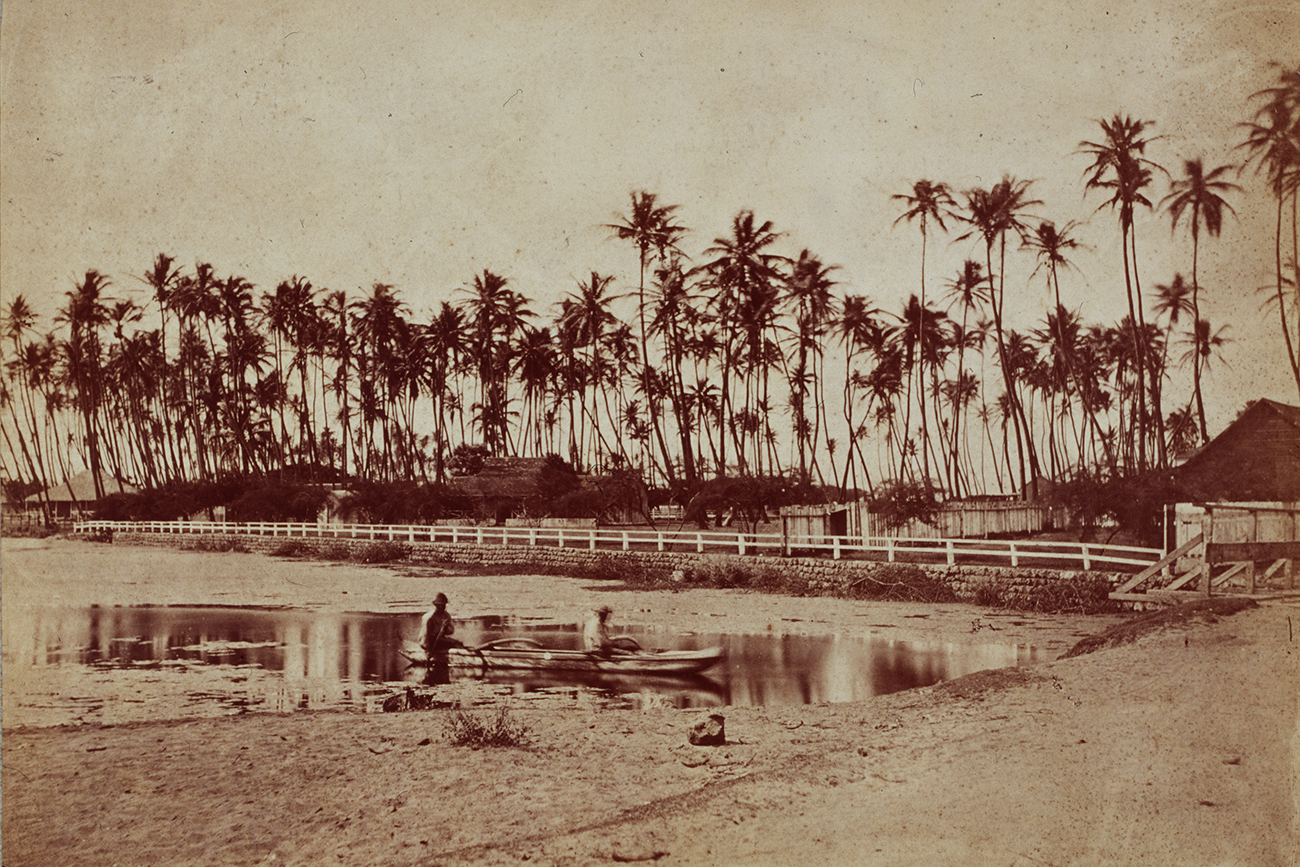Russian Hawaii: The attempt at conquest that came to naught

Fort Elizabeth is now a National Historic Landmark.
Vostock-PhotoIf things had turned out differently 200 years ago, Russians could today be spending their holidays in the Russian Autonomous Republic of Hawaii. While this might sound far-fetched, in fact, in the early 19th century the Russian Empire had a chance to take control of the Hawaiian Islands.
In the early 19th century, Russian explorers Ivan Kruzenstern and Yuri Lisyansky landed on the Hawaiian Islands and found many Americans already doing business there. Nevertheless, the Russians approached the Hawaiian king with offers of cooperation and friendship. After several years, however, they hastily left. Why?
The two kings
At the turn of the 18th/19th centuries, the Hawaiian Islands had two kings: Kamehameha the Great, who united the kingdom in 1810 with his capital in Honolulu on the island of Oahu; and Kaumualii, a vassal who ruled over the two smaller islands of Niihau and Kauai.
 King of Hawaii Island, Kamehameha I (1758-1819) and his warriors, 1819. Engraving by E. Bayard / The Illustrated World, 1880. Source: Getty Images
King of Hawaii Island, Kamehameha I (1758-1819) and his warriors, 1819. Engraving by E. Bayard / The Illustrated World, 1880. Source: Getty Images
Members of the Russian expedition met with Kamehameha, an avid ship lover who boasted a small fleet of foreign vessels. Kamehameha welcomed the guests heartily and offered to begin trade with Russia’s colonies in Alaska.
Since the first Russian visit, however, rumors began spreading among the locals and the Americans living in Hawaii that the Czar was bent on conquering the islands.
Enter the German doctor
In 1815, King Kaumualii’s soldiers commandeered the Russian merchant ship, Bering, traveling to California with supplies. The first governor of Russia’s colonies in America, Alexander Baranov, sent his envoy, Dr. George Schaffer, to negotiate with Kaumualii.
Schaffer, a German-born physician in Russian service, had no military, naval or diplomatic education. Perhaps Baranov simply had no one else to send. Schaffer was instructed to meet with Kamehameha, asking him to influence Kaumualii to return the ship.The ultimate goal, however, was not the Bering but instead to establish a way station in Hawaii to accommodate Russian ships carrying furs from Alaska to the booming markets of Canton, China. Also, Schaffer was instructed to negotiate Russia's monopoly in the trade of sandalwood, a very high-priced furniture material. Schaffer brought gifts and a letter from Baranov to Kamehameha.
Things started on the wrong foot, however, immediately upon Schaffer’s arrival in Honolulu in late 1815. Influenced by local American merchants, Kamehameha first refused to receive the doctor, and Baranov's letter was returned unopened. Luckily for Schaffer, however, Kamehameha's wife fell ill, and the doctor managed to save her, which won him the king's trust and an allowance to buy plots of land to build factories. This, however, quickly earned him the reputation as a Russian spy, and living in Kamehameha's lands became more dangerous.
 Georg Anton Schäffer. Source: Archive Photo
Georg Anton Schäffer. Source: Archive Photo
In May 1816, Schaffer left Oahu Island and set sail to Kauai, home of King Kaumualii. Upon Schaffer’s arrival, the second king decided to swear allegiance to Russian Emperor Alexander I, hoping that the distant empire would help him overthrow his local lord, King Kamehameha. Kaumualii also promised Russia the long-desired sandalwood monopoly. It seemed Schaffer had finally reached his ultimate goal. The Americans took action, however.
A conquest that never was
During his mission Schaffer signed a secret agreement with Kaumualii, upon which the king was obliged to assign 500 troops to assist Schaffer in the conquest of Kamehameha's land. Blinded by his earlier success, Schaffer sent the documents Kaumualii signed to St. Petersburg and to Baranov, and started buying warships for Kaumualii at the expense of the Russian-American company in Alaska. He also built three fortresses, naming them after Alexander I, his wife Elizabeth and Russian Marshal Barclay de Tolly. He also named one of Kauai’s valleys after himself.
 Two men paddle a small open boat in a pond in front of a coconut grove. Waikiki, Hawaii, ca. 1890. Source: Getty Images
Two men paddle a small open boat in a pond in front of a coconut grove. Waikiki, Hawaii, ca. 1890. Source: Getty Images
This haphazard effort at conquest, however, was soon put to an end by American merchants and sailors. Quickly they bought up all sandalwood, food supplies and salt in Kamehameha’s kingdom, leaving the Russians starving and without any goods to trade. Finally, the Americans in Russian service started defecting and moving to their compatriots' side.
In 1817, Schaffer was forced to leave Hawaii.
Cool reception in St. Petersburg
A month after Schaffer left Hawaii his report reached Tsar Alexander I. While the chance of conquering Hawaii might have seemed attractive, Alexander firmly refused Schaffer’s offer. How would the Russian Empire look, condemning Napoleon's recent territorial acquisitions, but at the same time acquiring a colony in the Pacific?
Moreover, Alexander didn't want the Hawaiian issue to spoil relations between Russia and its close partner, the United States.
Hawaii remained an independent international trading port for many more decades, and the Russians, just like other countries, continued to trade there. Today, Fort Elizabeth, the only reminder of Schaffer’s ill-fated conquest, is a historical park.
 Ruins of the Russian Fort Elizabeth at Hawaii, Kauai island. Source: Legion Media
Ruins of the Russian Fort Elizabeth at Hawaii, Kauai island. Source: Legion Media
If using any of Russia Beyond's content, partly or in full, always provide an active hyperlink to the original material.
Subscribe
to our newsletter!
Get the week's best stories straight to your inbox

